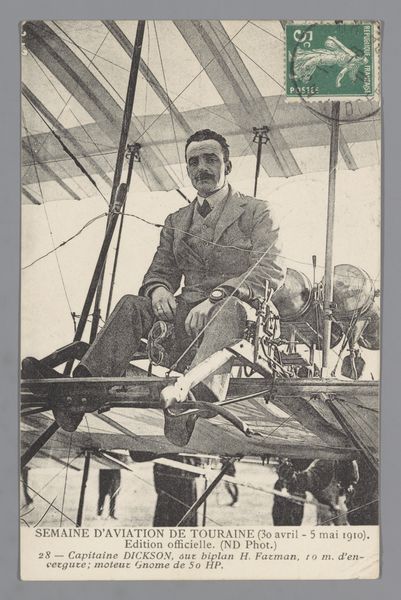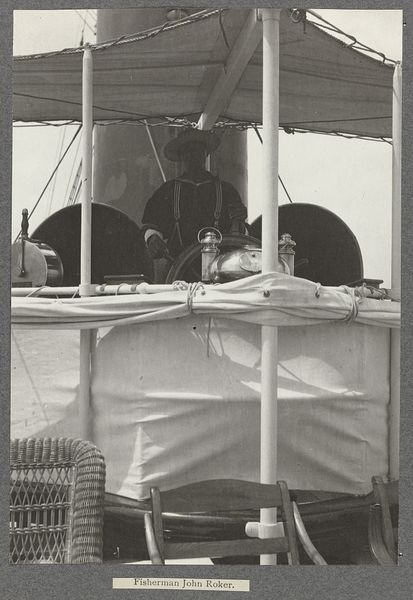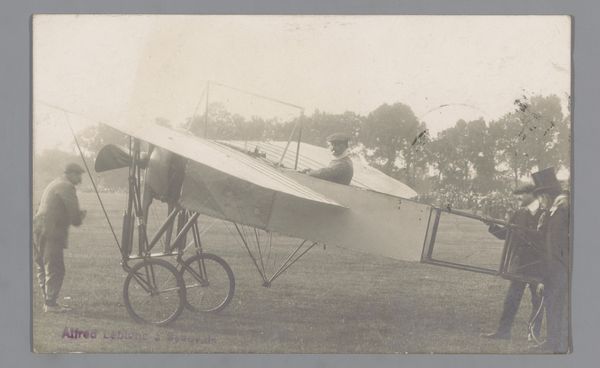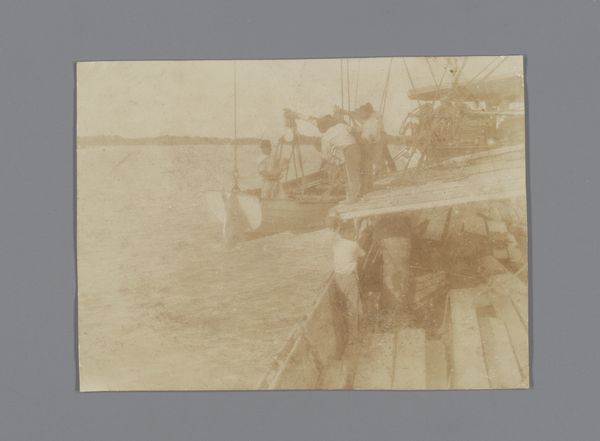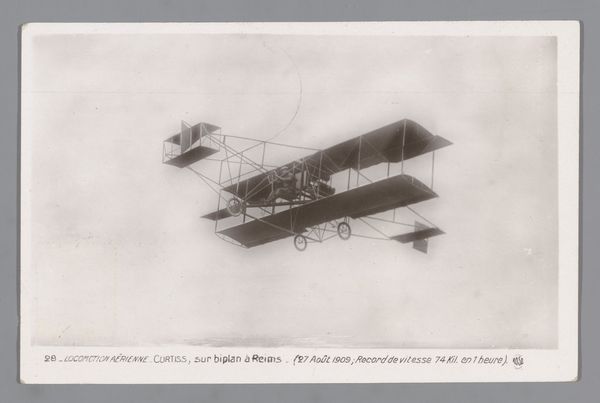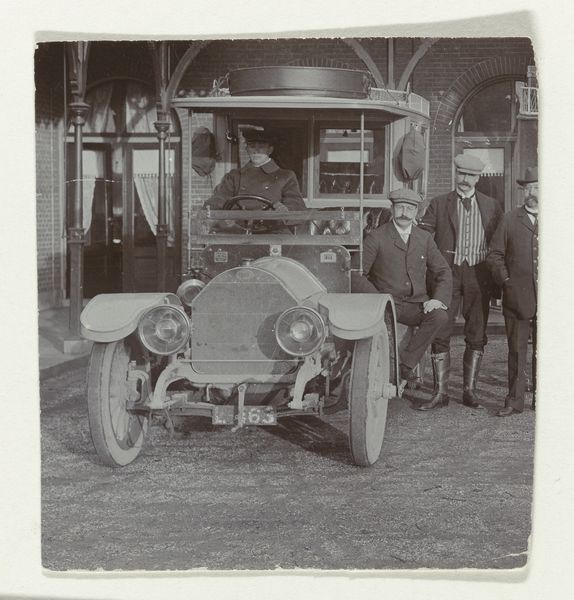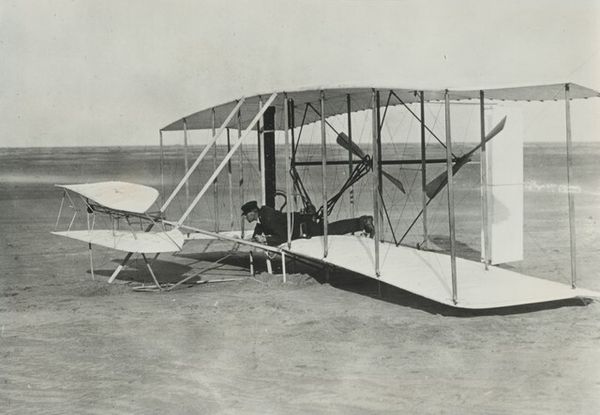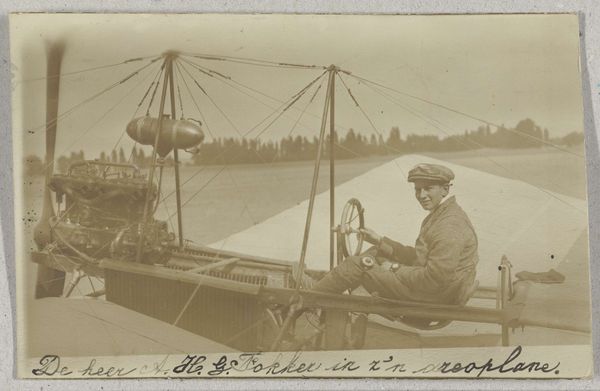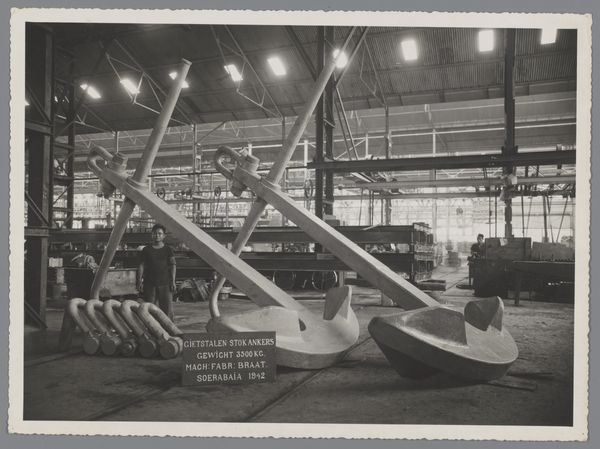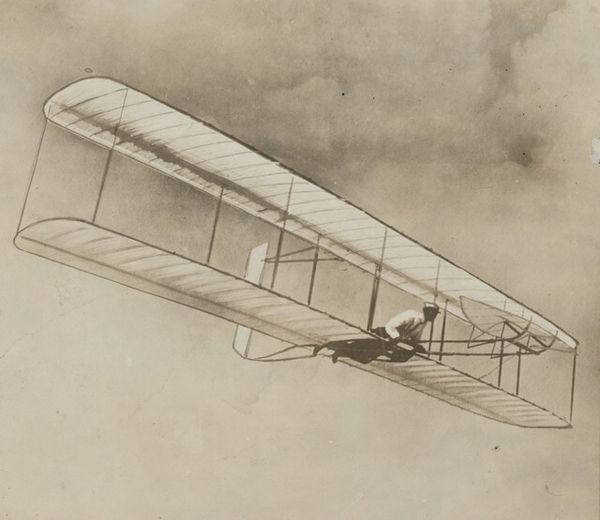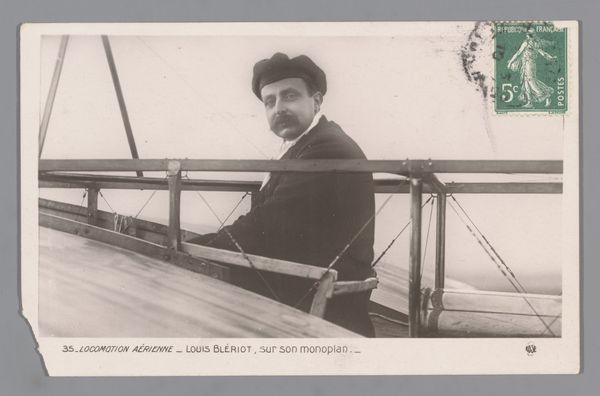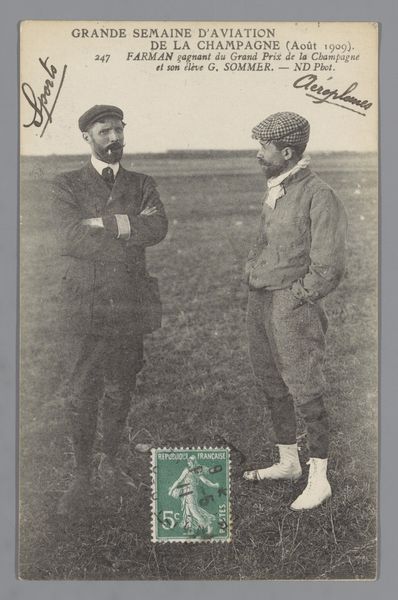
photography, gelatin-silver-print
#
portrait
#
landscape
#
photography
#
gelatin-silver-print
#
early-renaissance
Dimensions: height 138 mm, width 90 mm
Copyright: Rijks Museum: Open Domain
Editor: This photograph, “Portret van Louis Paulhan op zijn Voisin-vliegtuig,” captured sometime before 1915, depicts Paulhan within the intricate framework of his aircraft. I’m struck by how the machine seems to engulf him, yet he maintains such a composed expression. As a historian, what catches your eye when you look at this image? Curator: The interplay between man and machine here is telling. This photograph arrives during a period of unprecedented technological advancement. The rise of aviation became heavily intertwined with narratives of national progress and masculine heroism, with photographic portraiture helping cement this relationship in the popular imagination. Have you noticed anything about how Paulhan is posed? Editor: He seems quite formal, almost aristocratic, juxtaposed against the gritty, mechanical reality of the plane. It doesn't fit my expectation for an aviator in an open cockpit. Curator: Exactly. The early days of flight were inherently dangerous and were linked to technological advancement and nation building. Paulhan’s posture attempts to merge this risky image of a man against a feat of great ingenuity that helps build national morale. Consider also the act of display. Aviation meets often occurred as spectacles of the future and symbols of international competition. A constructed and formal portrait photograph such as this offers further spectacle as a publicity of national pride. How do you think images like these affected public perceptions? Editor: It's like he is deliberately trying to inspire and show great pride of his country. A symbol of aspiration. Before seeing this I had never considered how flying would affect national pride in this early period! Curator: Precisely! Photography played a crucial role in shaping this perception, documenting and disseminating these narratives to a wider audience, impacting social and cultural ideas and ideals of progress in the age of empire. Editor: This makes me view it completely differently!
Comments
No comments
Be the first to comment and join the conversation on the ultimate creative platform.
